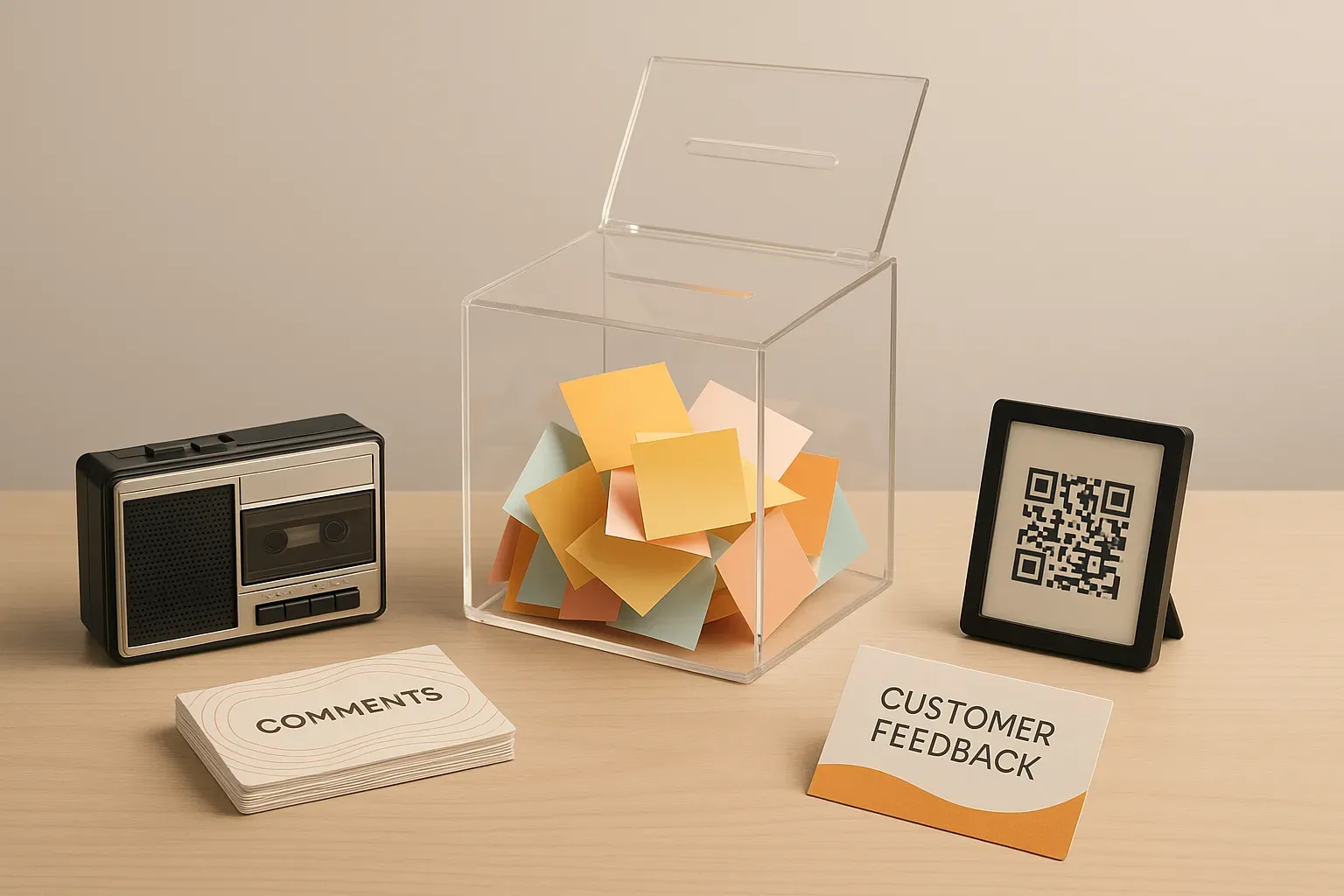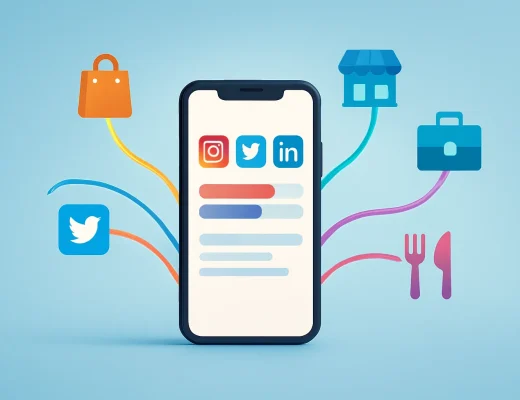15 Unconventional Ways to Get Customer Reviews
We asked industry experts to share one unconventional method they’ve used to gather customer testimonials or reviews and how those testimonials helped attract new customers. This article presents actionable approaches for transforming everyday client interactions into testimonials without complex systems. From QR code implementation to recorded strategy calls, discover how to collect feedback that builds credibility and drives growth.- Record Live Client Reflection Conversations
- Ask Questions That Prompt Customer Stories
- C-Cube Framework Builds Testimonials Naturally
- Three-Question Zoom Sessions Tell Client Stories
- Event Exit Booths Capture Multilingual Feedback
- Transform Casual Feedback into Micro-Stories
- Record Strategy Calls for Natural Testimonials
- Automate Testimonials Through Digital Touchpoints
- QR Codes Boost Authentic Review Collection
- Client Success Stories Create Mutual Benefits
- Personal Video Check-ins Foster Genuine Responses
- Tech Strategy Sessions Exchange for Feedback
- Curate Organic Posts from Client Networks
- Capture Authentic Reactions During Solution Demos
- Prioritize In-Person Feedback Conversations
Record Live Client Reflection Conversations

Ask Questions That Prompt Customer Stories
When we started asking our clients for testimonials, most of what we got back always felt vague. We got 3-5 word reviews like “great service” or “easy to work with,” etc.
Without a doubt, these were helpful, but weren’t enough to actually build trust with new leads. So we decided to change how we asked, not just who we asked.
So instead of sending a generic review request, we started asking one simple question right after a successful project: “What would you tell someone who’s thinking about hiring us but hasn’t decided yet?”
This question was a game-changer because it really helped clients focus on the before-and-after, what they were struggling with, what we did, and how things changed after using our services.
We attached some of these testimonials to our homepage, and it’s one of the top reasons new clients say they reach out.
So, don’t just ask for a “review.” Ask the kind of question that gets people to tell a story. That’s the kind of testimonial that moves the needle and makes it easier for new leads to trust the services you provide.

C-Cube Framework Builds Testimonials Naturally

Three-Question Zoom Sessions Tell Client Stories

Event Exit Booths Capture Multilingual Feedback
The most effective “unconventional” play we use is a live debrief booth at events. It’s a tiny corner near the exit with a placard: “How was interpretation today?” We invite organizers, speakers, and even headset users for a 60-second voice note in their native language. With consent, we (1) auto-transcribe, (2) translate, and (3) publish bilingual snippets of text plus the original audio tagged by industry (UN conference, energy summit, fintech forum).
Why it works:
-
Fresh, high context proof. Testimonials reference the exact session (“Arabic-French in Hall B”), not generic praise.
-
Authenticity you can hear. Prosody and emotion in the audio beat polished blurbs.
-
Multilingual reach. Prospects read the English line and click to hear it in Arabic, French, or Hindi; trust compounds.
Impact on pipeline:
-
Proposal embeds with 2 to 3 event-matched clips lift reply rates and shorten sales cycles; new clients can “audition” our work via real voices.
-
On the site, schema-marked excerpts (with source logos and event tags) drive better CTR from niche searches (“simultaneous interpretation Abu Dhabi energy”).
-
For enterprise deals, sales uses a sector-specific reel (60-90s) of these micro reviews; it consistently nudges procurement from “maybe” to “let’s trial.”
Simple gear, strict consent, big signal. Real voices close deals.

Transform Casual Feedback into Micro-Stories

Record Strategy Calls for Natural Testimonials
From experience, we know that an unhappy client is 20 times more likely to leave a negative review than a happy one. This is why we incentivize all our clients to leave positive reviews or recommend us to someone they know.
One of the slightly less common techniques we use is to jump on a strategy call with the client, which is recorded with their consent using Fathom or a similar AI notetaker, or even Zoom. During the call, we ask them what they think about our service. This approach yields the most genuine testimonials. Editing the video and sending it to the client for approval is the easy part — they almost always say yes. It’s much harder for a client, especially in the B2B niche, to record a video testimonial on their own, as they often struggle with what to say and may not respond. This method has proven to be the most effective for us.
Another approach we take during conference calls is to ask clients if they know anyone in their immediate network who could benefit from our services. If they mention businesses that are struggling with their marketing, we take the names and reach out to them directly, using our client’s name as a reference. We don’t wait for formal introductions.
Utilizing these simple but effective techniques has helped us gain more customers, position ourselves as a professional and trustworthy agency, and stand out in a crowded marketplace.

Automate Testimonials Through Digital Touchpoints

QR Codes Boost Authentic Review Collection
One unconventional method we’ve implemented at Resolute for gathering customer testimonials is the strategic placement of QR codes that link directly to our review platforms. We found that making the review process as frictionless as possible through quick links and QR codes significantly increased our customer feedback volume — especially when shared at an opportune moment such as the wrap-up of a successful project. This proactive approach has helped us build a more robust online presence with authentic customer voices, which prospective clients consistently mention as a key factor in their decision to work with us.

Client Success Stories Create Mutual Benefits
One unconventional method I’ve used for gathering customer testimonials is framing the request as an exclusive “Client Success Stories” blog series interview opportunity rather than a direct ask for a testimonial. This approach positions the retail clients as industry thought leaders rather than just satisfied customers, giving them a platform to showcase their own business while providing valuable feedback.
What makes this approach unique is the mutual benefit structure — offering clients additional exposure to our network and encouraging them to share the published feature on their own channels, creating a ripple effect of credibility. The five-question format also makes participation less intimidating than an open-ended testimonial request.
These testimonials help attract new customers because they come across as authentic industry partnerships rather than solicited reviews.

Personal Video Check-ins Foster Genuine Responses

Tech Strategy Sessions Exchange for Feedback

Curate Organic Posts from Client Networks

Capture Authentic Reactions During Solution Demos
I stopped asking customers for testimonials. I earned them in public instead.
We build AI-powered business systems, and instead of chasing quotes or review forms, I record short demo sessions with clients where we solve a real problem on screen. It’s raw, unscripted, and completely authentic. I tell them, “Let’s vibe code this together. Let’s automate the boring stuff and free your team up for the smart work.” By the end of that session, they’re usually grinning and saying things like, “That would save us hundreds of hours.” That clip is the testimonial.
Later, we get their permission and post it with a short story about what changed…the before and after. That kind of transparency builds trust faster than any polished quote could. People believe what they can see.
I’ve done the same for my friends’ businesses, like RyanWilson.land, a professional landman platform, and TreeBusiness.xyz, a directory for service pros. We capture real interactions: an owner seeing their AI-generated quote system for the first time, or a foreman realizing they no longer have to retype data into five systems. Those reactions sell better than any scripted line ever could.
The unconventional lesson? Testimonials don’t have to be “asks.” They can be the natural byproduct of real collaboration, caught in the moment when the solution clicks. That’s when people are honest, and that’s when your future customers start believing.

Prioritize In-Person Feedback Conversations








